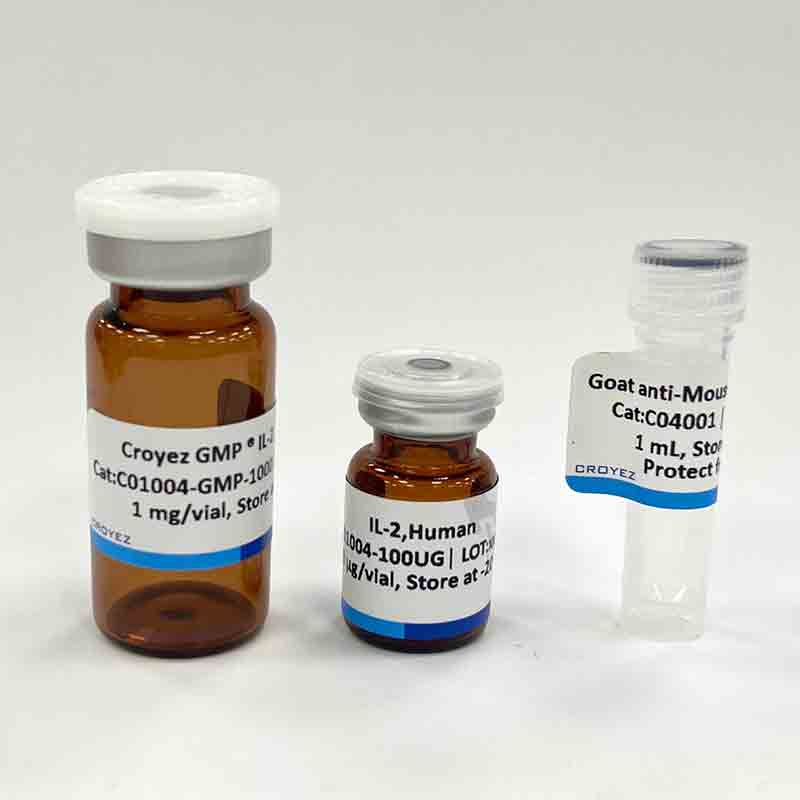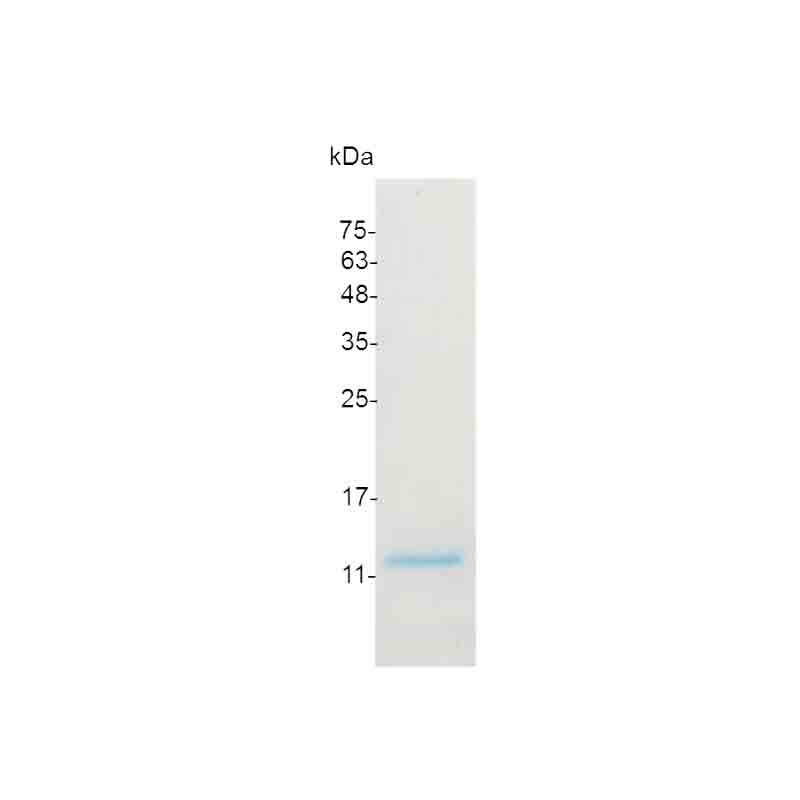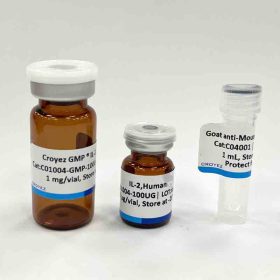CXCL10 ,belongs to the CXC chemokine family, is also known as IP-10. CXCL10 was originally identified as a responsor to IFN-gamma in monocytes, endothelial cells and fibroblasts. The effects of this chemokine can be induced by binding to the cell surface chemokine receptor CXCR3. Research shows that CXCL10 is a chemoattractant for activated T-lymphocytes, monocytes and macrophages. It also has other functions, such as promotion of T cell adhesion to endothelial cell.
Sequence:
IPLARTVRCNCIHIDDGPVRMRAIGKLEIIPASLSCPRVEIIATMKKNDEQRCLNPESKTIKNLMKAFSQKRSKRAP with polyhistidine tag at the N-terminus
Source:
Escherichia coli
Endotoxin Test:
<0.1 EU per 1 μg of the protein by the LAL method.
Activity:
Measure by its ability to chemoattract BaF3 cells transfected with human CXCR3. The ED50 for this effect is <0.2 μg/mL.
Purity:
>98% as determined by SDS-PAGE. Ni-NTA chromatography
Formulation:
The protein was lyophilized from a solution containing 1X PBS, pH 7.4.
Reconstitution:
It is recommended to reconstitute the lyophilized protein in sterile H2O to a concentration not less than 100 μg/mL and incubate the stock solution for at least 20 min to ensure sufficient re-dissolved.
Storage:
Lyophilized protein should be stored at -20°C. Upon reconstitution, protein aliquots should be stored at -20°C or -80°C.
Note:
Please use within one month after protein reconstitution.





